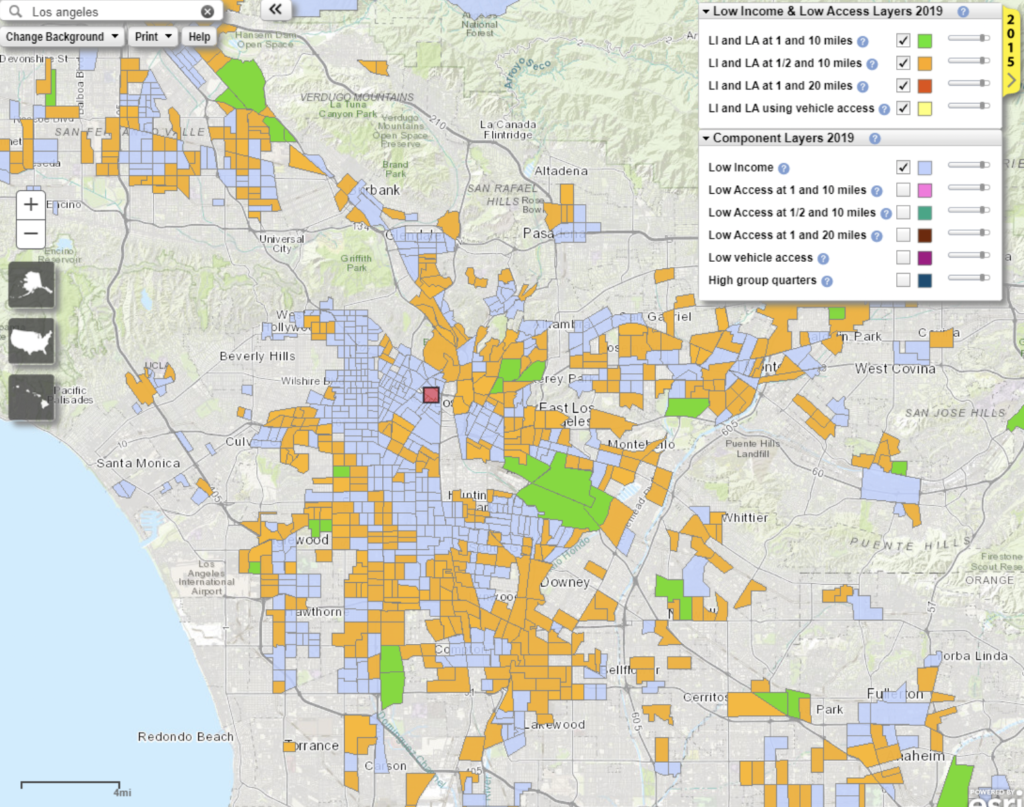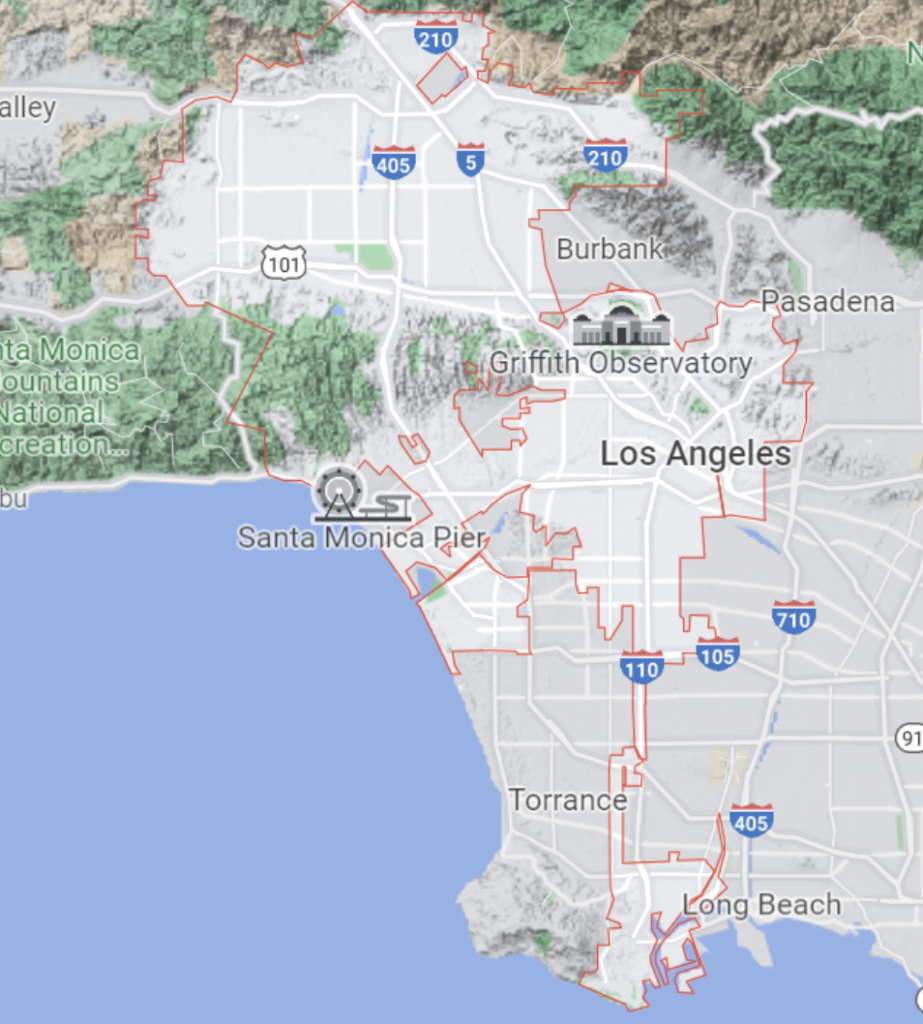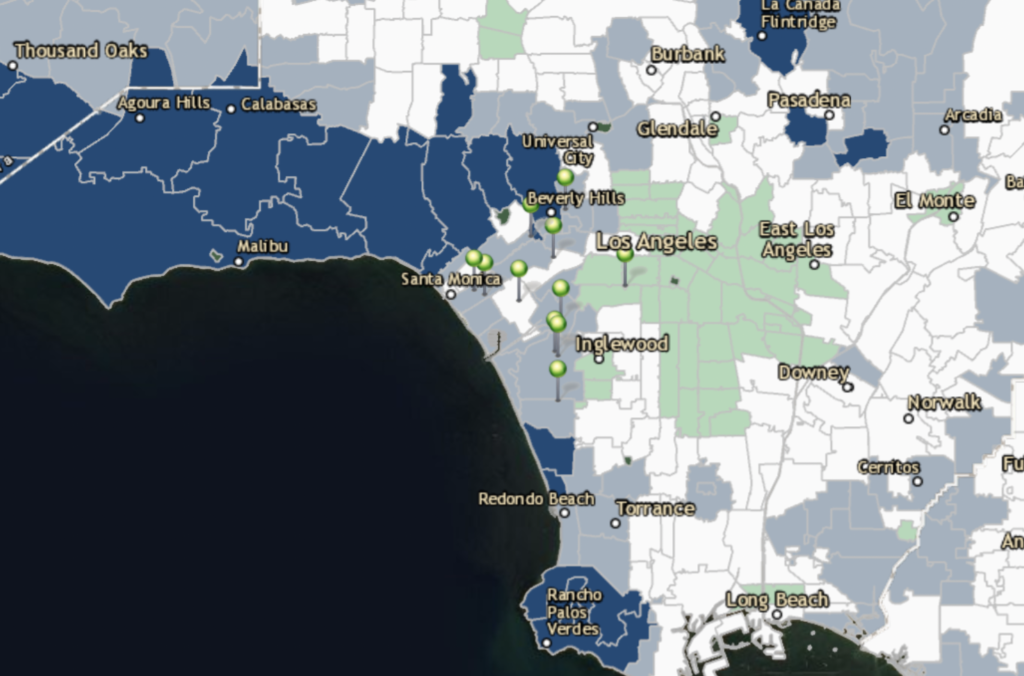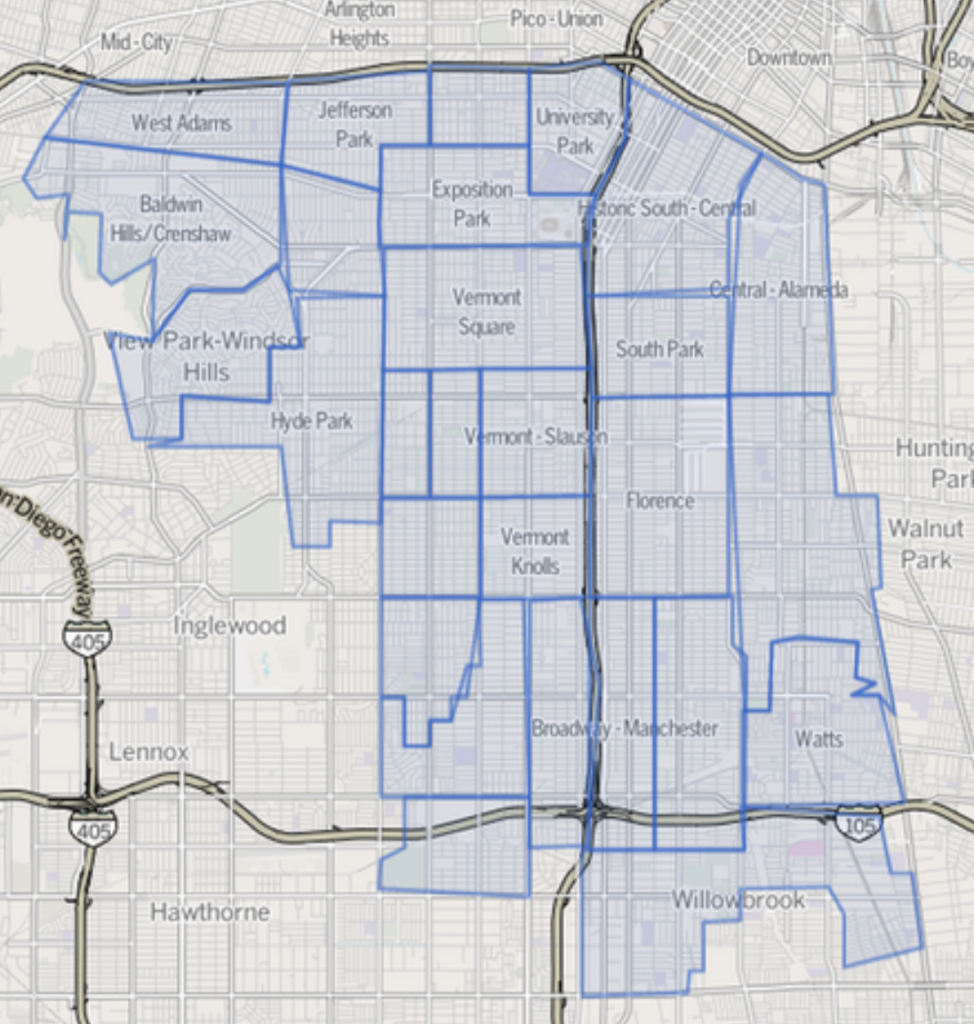What Is A Food Desert?
A food desert is a geographical area where it is difficult to buy healthy, nutritious food at an affordable price. Food deserts include areas where travel to a grocery store is difficult, and in areas where healthy food may be available, but at an unaffordable price.
Los Angeles is among the top ten cities in the U.S. with the most or largest food deserts.
Learn more: What Are Food Deserts?
Fast Facts About Food Deserts in Los Angeles
- 1 million households in Los Angeles are food insecure (De La Haye et al. 2021).
- 37% of Los Angeles households experiencing food insecurity live in a food desert. That’s at least 370,000 households living in a food desert (De La Haye et al. 2021).
- 24.3% of adults in Los Angeles are considered obese and 1 in 10 adults in L.A. have type 2 diabetes (CDC; LA County Public Health)
Why Are There Food Deserts In Los Angeles?
Food deserts are a socio-economic problem that tend to occur in specific neighborhoods as a result of a lack of proper aid and investment in that neighborhood.
Food deserts are found in Los Angeles in neighborhoods with high poverty levels. These areas have lower access to transportation, making it more difficult to get to a grocery store.
Food deserts are also disproportionately found in areas where the residents have lower levels of education and high unemployment rates. Areas with food deserts also have high rates of abandoned or vacant buildings.
Food deserts are more likely to occur in communities of color in Los Angeles. A national 2014 study showed that even in areas of equal poverty, Black communities are less likely than communities of other races to have access to grocery stores and fresh food (Bower et al. 2014).
Where Are There Food Deserts In Los Angeles?
Areas in Los Angeles with low-income and low-access to stores, as well as low vehicle access are food deserts.
This map provides an overview of where food deserts are located in the city of Los Angeles and surrounding areas. Any area showing color is a food desert. These areas closely overlap with low-income areas.

The map below provides a more zoomed-in view of food deserts in L.A. by zip code. Areas in pink have low access to grocery stores, areas in orange are low-income, and areas in red are both. All of these areas can be considered food deserts. (Source)


Food deserts in Los Angeles also occur more frequently in primarily Black neighborhoods (Hilmers et al. 2012; Lewis et al. 2005).
A UCLA study found that there is a positive correlation between the number of grocery stores in an area and the income level of residents in the area. Areas with low-income have more fast food stores and fewer grocery stores selling healthy food (Algert et al. 2020).
The map below shows grocery store locations overlapped with incomes across L.A. county, where lighter green areas represent areas of lower income. While this map does not show all grocery store locations in the city, it does highlight the lack of grocery stores in low-income areas.

Lastly, many people in Los Angeles food deserts do not have a car. The map below shows the number of households without cars (dots) and communities of color (purple). Notice that the areas with fewer cars and with more people of color line closely mirror the map of food deserts shown above.
Solutions
Performing research: https://ibmhadoop.devpost.com/submissions/32261-los-angeles-where-are-the-food-deserts
UCLA project: https://laresourceaccess.humspace.ucla.edu/our-project/food-deserts/
Beyond research, multiple solutions are needed to address food deserts.
Increasing the Number of Grocery Stores
Several programs to solve the issue of food deserts focus on increasing access to healthy food by increasing the number of grocery stores. The best example of this is the Healthy Neighborhood Market Network, a program that is transforming liquor stores and other small convenient stores into healthy mini markets. Some of the healthy food is subsidized by another program, COMPRA, meaning that fresh fruits and vegetables can be made more affordable to residents.
This solution makes use of the prevalence of small markets and liquor stores in food deserts. The program offers store owners training and upgrades to their store, and residents of the area benefit from having a nearby store that sells healthy food that they can afford.
The map below shows the location of Healthy Neighborhood Markets in Los Angeles. Note that many of these store locations are in food deserts depicted in the maps above.
Increased Access To Vehicles And Other Public Transportation Systems
In addition to creating more healthy food options locally, increasing transportation options can help reduce food deserts.
One method to increase transportation to grocery stores is to build up better public transportation. Unfortunately, Los Angeles is known as a city in which you need a car to get around. The Los Angeles metro system is attempting to improve L.A.’s transportation system to improve mobility and increase transit options.
Transit that better serves residents of food deserts in L.A. will aid in increasing access to healthy food.
Other Solutions
Other solutions that could help eliminate food deserts in the city of Los Angeles include:
- Financial incentives and support for neighborhood-based grocery stores and farmers markets with discounted prices
- Increased financial assistance for residents of food deserts to buy food
- Increased community gardens and urban farming
- Restrictions on where dollar stores can be, as they displace grocery stores
- Increased public health education to encourage healthy eating
Some of these solutions are already being implemented.
Case Study: South Los Angeles
South Los Angeles is a region of L.A. that contains many smaller neighborhoods. Neighborhoods include Hyde Park, Jefferson Park, and Florence, among others.

South Los Angeles is considered a food desert. This is due to low access to transportation and low-incomes. Studies show that neighborhoods in South Los Angeles have more fast-food restaurants than wealthier neighborhoods in West Los Angeles (Lewis et al. 2005).
South L.A. follows the classic characteristics of where food deserts are most commonly found. Compared to the rest of the Los Angeles metropolitan area, South L.A. has a lower education level, lower income, and a larger non-white community.
- Only 12.8% of South L.A. residents were enrolled in college or graduate school between 2015-2019, compared to 36.5% of people in the Los Angeles area.
- The median household income in South L.A. is $33,661 compared to a median of $62,142 in the rest of L.A.
- 27.9% of South L.A. residents are Black compared to 8.9% of the people in the greater city of Los Angeles.
(Source: American Community Survey; U.S. Census).
Many solutions have been suggested to increase South L.A.’s residents’ access to healthy food.
South L.A. is the subject of several studies that aim to understand where and why food deserts occur in Los Angeles. A 2020 study focused on mapping three neighborhoods in South L.A. with the goal of identifying possible solutions to food deserts (Payán et al. 2020).
The Los Angeles City Council has also implemented regulations that reduce the number of fast food restaurants allowed in food deserts. The passage of this legislation, in addition to another measure that offered grocery stores financial incentives to open in food deserts, has increased access to healthy food in South L.A. In fact, this legislation led to the opening of a new grocery store in the area.

